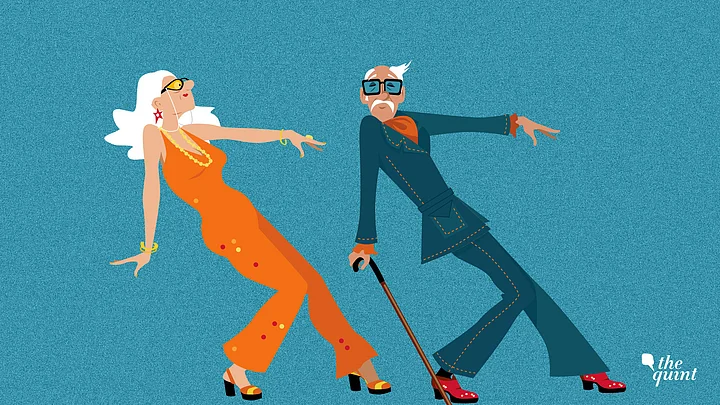Our ancient treatises on dance and performing arts like the Abhinaya Darpana, the Natya Shastra, the Sangeet Ratnakara have segments devoted to the qualities and attributes of the ‘ideal performer’ or patra.
They go into detail on the features, talents, skills that the ideal dancer must possess.
The one thread that is common in all these treatises is the beauty and youthfulness of the body that is an essential requirement of the performer.
Recently I was invited to a brief illustrative performance by a classical dance doyenne who had electrified theatres and wowed critics and amateurs alike in his heydays, with a superb command over technique, impeccable taste, vast knowledge of form and scripture, layered performances and exquisite body control.
A viewing of his recent performances however has been tinged with pain to behold an elderly man, putting himself through the hoops in a vain bid to reignite a flash of his undoubted and exquisite genius.
The audiences are still there, to see being played out what has only been heard of –and to clap furiously at the fleeting glimpse of a genius – or the ability of an old man to jump and twirl for a few fleeting moments.
One would argue of course that there have been Chandralekha, Raman Kutty Nair, Uday Shankar who performed into years well past their prime, and that it was their maturity of mind and body that brought out some of their finest work.
But these could be rare instances of performers executing choreographic and thematic work rather than our margam solo repertoires which lay great stress on the relentless physical virtuosity of the dancer.
Parameters of Performance in Dance
In 2003, the Delhi High Court upheld the rule of Indian Council for Cultural Relations (ICCR) which stated that performing artists should retire by the age of 45, and those senior, would only be placed in the category of lecture demonstrations. There has been considerable heartburn over this, of course, with one writer/dancer saying “it was the sound of ageism” reverberating loud and clear. She also made a case for discrimination on the grounds of quality rather than age. (Article published in Narthaki.Com, April, 2003).
However, standardisation of merit or quality, may well be rather challenging to put in place.
Also, government bodies do make exceptions for presenting well established talents on stage, and they do not stipulate a retirement age for all artists and art forms.
The Sangeet Natak Akademi has instituted the Bismillah Khan Yuva Puraskar which the dancer /performer is eligible to receive till the age of 40, which widens the field considerably.
However, there are within the systems of teaching classical dance in India, an unspoken code – that certain items are not taught to students who have not reached a certain age or maturity. Would one conclude that the imputation of ageism runs both ways?
A Fast-Fading ‘Guru-Shishya Parampara’
Dance requires dexterity of the body as well as the mind. Unfortunately for all dancers, the bitter truth is that the body fades much before the mind; maybe at no pre determined one-size-fits-all age, but fade it does. Noted dance critic, the late Shanta Serbjeet Singh had put it rather bluntly, “you can’t have bulky dancers performing...”
And as one venerated Kathakali guru had said, “no one should attempt to emote the shringara rasa post 40! The required facial muscles just don’t obey the rasa’s commands!” Very often, just as the mind matures and the creative juices turn rich with ‘mellow fruitfulness’, the spring is no more in the gait, and the music has left the body. For a dancer, this is not only a creative tragedy, but very often an economic one too.
While the adulation of audiences is hard to give up as a successful performer, even a promising teaching career is jeopardised since it goes hand in hand with the glamour of a leading performer able to put his/her students on stage at leading festivals and shows.
Our long treasured guru-shishya parampara, patronised by kings, which allowed senior performers and gurus to create, teach and mould future performers, is fast fading.
It is here that the unstructured, disorganised nature of the dance industry in India, often dependent on arbitrary patronage rather than structured and objective selection systems, leaves many a dancer in the lurch.
The artist must have the opportunity to continue her study and pass on the fruits of her creative labour without being pushed into incongruous situations which bring no joy to either performer or viewer.
(Kolkata-based Sunita Chowdhurie interprets and analyses performing and visual arts. This is a personal blog and the opinions expressed above are the author’s own. The Quint neither endorses nor is responsible for the same.)
